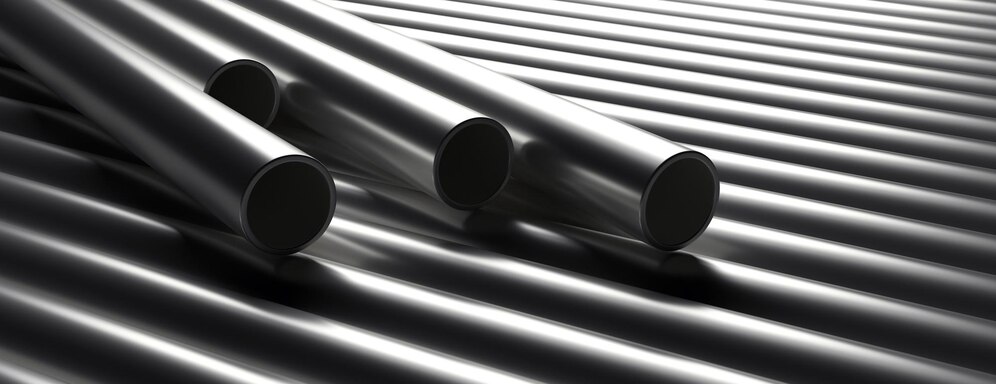Quick Inquiry
The oil and gas industry relies on a vast network of pipelines to transport and distribute resources efficiently. These pipelines face numerous challenges, including corrosion, high pressure, and extreme temperatures. To address these challenges, seamless pipes have emerged as a preferred choice for the industry.
This article focuses on carbon steel seamless pipes and their significance in the oil and gas sector.
Corrosion Threats in the Oil and Gas Industry
Corrosion poses a significant threat to the integrity and safety of pipelines in the oil and gas industry. It can lead to leaks, pipeline failures, and environmental hazards. Various factors contribute to corrosion, such as moisture, oxygen, corrosive chemicals, and microorganisms. Therefore, selecting the right materials for pipelines becomes crucial in mitigating corrosion risks.
To combat corrosion effectively, carbon steel seamless pipes are widely employed due to their superior resistance. They are highly valued for their durability and strength. Carbon steel contains iron and carbon, and it offers excellent mechanical properties along with good resistance to corrosion. Additionally, the pipes have a smooth internal surface, reducing the accumulation of deposits and minimising the risk of corrosion.

Different Kinds of Seamless Pipes Used in the Oil and Gas Industry
Carbon Steel Seamless Pipes
Carbon steel pipes are widely used in the oil and gas industry due to their exceptional strength and resistance to corrosion. They are commonly used in the transportation of natural gas, petroleum, and other hydrocarbon fluids. These pipes are manufactured using a seamless process, which involves heating a solid billet and then piercing it to form a hollow tube. Carbon steel seamless pipes are available in various grades and specifications to meet specific project requirements.
Alloy Steel Seamless Pipes
Alloy steel pipes are known for their high strength, resistance to corrosion, and ability to withstand high temperatures. These pipes are commonly used in oil refineries and petrochemical plants where extreme conditions prevail. The addition of chromium and molybdenum to the steel composition enhances its mechanical properties, making it suitable for demanding applications.
Stainless Steel Seamless Pipes
Stainless steel pipes are highly resistant to corrosion, making them ideal for environments with high moisture or chemical exposure. They are commonly used in offshore oil rigs, marine applications, and refineries. Stainless steel seamless pipes offer excellent longevity, reliability, and low maintenance requirements, making them a preferred choice in critical applications.
Duplex and Super Duplex Seamless Pipes
Duplex and super duplex pipes are duplex stainless steels that exhibit superior corrosion resistance and high strength. These pipes are particularly useful in environments where chloride-induced stress corrosion cracking is a concern, such as offshore platforms and subsea pipelines. Duplex and super duplex seamless pipes offer excellent resistance to pitting, crevice corrosion, and erosion.
Nickel Alloy Seamless Pipes
Certain applications in the oil and gas industry require pipes with exceptional resistance to high temperatures, aggressive chemicals, and extreme pressures. Nickel alloy pipes fulfil these requirements. Nickel alloys, such as Inconel and Monel, possess excellent heat resistance and corrosion resistance, making them suitable for applications in chemical processing plants, desalination facilities, and high-temperature environments.
Common Types of Seamless Pipes Used in the Oil and Gas Industry
ASTM A53
ASTM A53 seamless pipes are widely used in the oil and gas industry due to their versatility and excellent performance. They are suitable for conveying gas, water, and oil at various temperatures and pressures. These pipes are available in different grades, such as Grade A and Grade B, to meet specific requirements.
A106
A106 seamless pipes are a type of carbon steel pipe that is specifically designed for high-temperature service. These pipes are well-suited for applications in industries such as oil and gas, refineries, and power plants, where elevated temperatures and pressures are common. They exhibit excellent mechanical properties, making them reliable and durable in harsh conditions. Their ability to handle high-temperature environments without deformation or failure makes them a popular choice for critical applications.
A333
A333 seamless pipes are designed to operate in low-temperature conditions, making them ideal for cryogenic applications in the oil and gas industry. These pipes are made of carbon and low alloy steel, which provide superior toughness and impact resistance at extremely low temperatures. They are commonly used in facilities dealing with liquefied natural gas (LNG), where temperatures can reach ultra-low levels. The pipes are well-regarded for their ability to maintain their integrity and mechanical properties even in the most challenging cold-temperature scenarios, making them an essential component in low-temperature applications.
API 5L
API 5L seamless pipes are widely used in the transportation of oil and gas. These pipes comply with the specifications set by the American Petroleum Institute (API) and are known for their strength, durability, and resistance to corrosion. API 5L seamless pipes are available in different grades, such as X42, X52, X60, and X70, offering varying levels of strength and performance.
Features of Seamless Pipes for Oil and Gas
Seamless pipes for oil and gas applications possess several distinct features that make them well-suited for the industry’s demanding conditions:
Resistance to High Pressure, Temperature, Stress & Corrosive Atmosphere
Seamless pipes are engineered to withstand extreme conditions commonly encountered in the oil and gas industry. They can handle high pressures, temperatures, stress, and corrosive environments, ensuring the safe and efficient transport of fluids.
Wide Range of Applications
They find extensive applications in various industries, including oil and gas, refining, petrochemical, chemical, fertilisers, power generation, automotive, bearing, mechanical, and structural. Their versatility makes them indispensable for numerous processes and systems.
Tolerance for OD and ID
They are manufactured with precise dimensions, ensuring tight tolerances for both outer diameter (OD) and inner diameter (ID). This dimensional accuracy allows for seamless integration and efficient functioning within the oil and gas infrastructure.
Strength and Durability
They are known for their strength and durability. The absence of welds in seamless pipes enhances their structural integrity, making them capable of withstanding high pressures and temperatures without compromising performance.
Excellent Corrosion Resistance
They exhibit excellent corrosion resistance due to their manufacturing process, which eliminates the need for welding. The absence of welds minimises the vulnerability to corrosion, making them highly reliable for long-term use in corrosive environments.
Smooth Surface Finish
They feature a smooth surface finish, reducing the frictional resistance during fluid flow. This characteristic not only facilitates efficient transportation but also minimises the accumulation of deposits and contaminants, ensuring the integrity and cleanliness of the pipelines.
Resistance to Damage and Cracking
The seamless manufacturing process produces pipes without any welded joints, reducing the risk of weak points susceptible to damage or cracking. This structural integrity enhances the overall reliability and lifespan of the pipelines.
Ease of Bending
Compared to other types of pipes, seamless pipes are easier to bend, allowing for greater flexibility in pipeline design and installation. This attribute simplifies the construction process and enables the implementation of complex routing configurations as per project requirements.
Frequently Asked Questions
Q: What is carbon steel?
A: Carbon steel is a type of steel that primarily consists of iron and carbon. It is known for its high strength and durability, making it suitable for various industrial applications, including the oil and gas industry.
Q: Why are carbon steel seamless pipes preferred in the oil and gas industry?
A: Carbon steel seamless pipes are preferred in the oil and gas industry due to their exceptional strength, durability, and resistance to corrosion. The seamless manufacturing process eliminates the need for welding, which reduces the vulnerability to corrosion and ensures the integrity of the pipelines.
Q: What are the advantages of carbon steel seamless pipes in the oil and gas industry?
A: Carbon steel seamless pipes offer several advantages in the oil and gas industry, including:
- High strength and durability
- Resistance to corrosion and erosion
- Ability to withstand high pressures and temperatures
- Smooth internal surface for efficient flow
- Easy bending and installation flexibility
- Cost-effectiveness compared to other pipe materials
Q: How are carbon steel seamless pipes used in the oil and gas industry?
A: Carbon steel pipes are used in various applications in the oil and gas industry, including the transportation of crude oil, natural gas, and petroleum products. They are also used in refineries, petrochemical plants, and offshore drilling platforms for their excellent performance under demanding conditions.
Q: Can carbon steel pipes be used for both high-temperature and low-temperature applications?
A: Yes, carbon steel seamless pipes can be manufactured to suit both high-temperature and low-temperature applications. Different grades and specifications are available to meet the specific temperature requirements of different processes in the oil and gas industry.
Q: How can I choose the right carbon steel seamless pipes for my oil and gas project?
A: To choose the right carbon steel seamless pipes for your oil and gas project, consider factors such as the specific application, temperature and pressure requirements, corrosion resistance, and compliance with industry standards and regulations. Consulting with a reputable seamless pipe supplier or manufacturer can also help in selecting the appropriate pipes for your project.
Invest in Supreme Quality Carbon Steel Seamless Pipes
Are you in the oil and gas industry and searching for reliable and high-performance piping solutions? Invest in supreme quality carbon steel seamless pipes manufactured by Anand Seamless Ltd for your projects and experience the difference we make.
Our pipes are crafted with precision and expertise, ensuring exceptional strength, durability, and resistance to corrosion. With seamless construction, these pipes eliminate the risk of weld-related issues and provide a smooth internal surface for efficient fluid flow.
By investing in our first grade carbon steel seamless pipes, you can trust that your pipelines will withstand the harshest conditions, delivering reliable performance and long-lasting durability. We offer a wide range of grades, sizes, and specifications to cater to your specific project requirements.
Contact us at +91-9099996853 or email us at inquiry@anandseamless.com to discuss your needs and let our expert team assist you in finding the perfect piping solution for your projects.
lATEST BLOG |
|
How to Choose Right Grade Carbon Steel Seamless Tubes
Carbon steel seamless tubes are essential componen |
|
Basics of Aluminum Finned Tubes
In the world of heat exchange technology, aluminiu |
|
How to Enhance Mechanical Tubes for Various Applications
Mechanical tubes form the backbone of various indu |
|
Why Are U-Tube Heat Exchangers Undeniably Vital: A Complete Guide
In the landscape of industrial heat exchange syste |
|
Introductory Guide to Economizer Tubes
In the dynamic landscape of industrial operations, |

